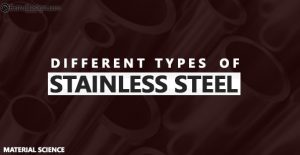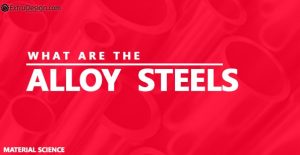Have you ever thought that the heat and the temperature are the same? The answer is no. Heat and temperature are related to each other but are different concepts. In this article, we will understand how they are interconnected. Heat vs Temperature When two bodies of different temperatures bring them into contact with each other, […]
How Rockwell Hardness Test is conducted?
The ability of a material to resist indentation or penetration is called Hardness. To test the hardness of any material is simply forcing an indentor into the surface of the metal by applying the load. There are different methods are developed to test this hardness. In the previous article we have discussed The Brinell Hardness test, this article, […]
How Brinell Hardness Test is conducted?
The ability of a material to resist indentation or penetration is called Hardness. To test the hardness of any material is simply forcing an indentor into the surface of the metal by applying the load. There are different methods are developed to test this hardness. In this article, we are going to discuss one of the […]
What are the Non-Destructive testing methods?
The components that we design and engineering should satisfy the service and the requirement. For that, engineers make sure that the finished product should be tested before it is going to be installed and start functioning. Engineers employed few testing methods both destructive and the non-destructive tests of the materials. Let’s discuss what are the […]
Universal Testing Machine – Construction and Working principle
The behaviour of the material can be tested by different testing methods, with the help of testing machines. The universal testing machine is a material testing machine used for static testing such as a tensile test or compressive test. It is also known as UTM. In this article, we have discussed the construction and the working principle […]
How the Impact Test is conducted?
In the previous tutorial, we have discussed the list of Material Testing Methods, and in this tutorial, we are going to discuss how to conduct the Impact Test. The behaviour of the material under dynamic loading is entirely different from the behaviour of the material under the static loading. The material may have high strengths but when it comes […]
How the Direct Shear Test is conducted?
In the previous tutorial, we have discussed the list of Material Testing Methods, and in this tutorial, we are going to discuss how to conduct the Direct Shear Test. Direct Shear Test The shear test is conducted to measure the shear strength of the material. Shear strength test comes under the destructive test where we apply the gradually increased load up to […]
What are the different hardness testing methods?
The ability of a material to resist indentation or penetration is called Hardness. To test the hardness of any material is simply forcing an indentor into the surface of the metal by applying the load. There are different methods are developed to measure this hardness. In this article, we are going to discuss these different hardness […]
How Tensile Test is conducted?
In the previous tutorial, we have discussed the list of Material Testing Methods, in this tutorial we are going to discuss how to conduct the tensile test. Tensile Test The tensile test comes under the destructive test where we apply the gradually increased load up to the material to get a fracture. So a tensile test is […]
What are the different Material Testing Methods? (Testing of Materials)
The components that we design and engineering should satisfy the service and the requirement. For that, engineers make sure that each type of material should be tested before we used for the making of the components. Along with the strength, there are other properties are also needs to test such as hardness, toughness, brittleness, etc. […]
What are the different Non-Metallic Materials?
In material science, materials are classified into four groups Metals, Non-metals, Ceramics, Composites. In this article, we are going to discuss Non-Metallic Materials. The Non-Metallic materials are used in engineering due to their less density and flexibility, resistance to electricity, heat and most importantly it is available at low costs. Non-Metallic Materials Before going into the topic it […]
What are the different Non-Ferrous Metals?
The metal which is consisting of the main constituent other than the iron is known as Non-ferrous metals. For example aluminium, copper, lead, nickel, tin, titanium and zinc. We have discussed the characteristics of the different Non-ferrous metals and the purpose and use of the non-ferrous metal in different applications in this article. Non-Ferrous Metals Having lightweight, high conductivity, corrosion resistance […]
What are the different Case Hardening processes?
Case Hardening is also known as Surface Hardening. Sometimes also are known as the Face Hardening. The process of hardening the surface of the components is known as the Case Hardening. There are different types of Case hardening processes available. We have discussed each of them here! Case Hardening / Surface Hardening The process of Hardening […]
What are the different Heat Treatment processes?
In material science, the Heat treatment processes used to impart the physical properties by altering the microstructure. We have discussed the purpose of the heat treatment and the different heat treatment processes briefly. Heat Treatment Heat Treatment includes the heating and cooling of the metal to obtain the desired mechanical properties without changing the chemical […]
Stainless Steel – Types, Properties Applications, Grades
We all know Stainless steel is notable for its corrosion resistance property. Stainless steel is an alloy of iron and chromium which will significantly improve the corrosion resistance property. Along with the chromium, there are few other alloy elements to make the stainless steel more strengthen and harden and tough and increase the few other […]
What are the different Carbon Steels and their Properties?
Steel is the alloy of iron and carbon. Steel consists of carbon content up to a maximum of 1.5%(Somewhere it will be mentioned as up to 2%). The other elements of steel are silicon, phosphorous, manganese, copper etc. will be having the more or fewer compositions to attain the desired properties. In this following article, we are going […]
What are the different Alloy Steels?
Steel is the alloy of iron and carbon. Other than these two elements we can add few other elements in order to get desired mechanical properties. those are known as the alloys of steel. These will be having the more or fewer compositions. The Alloy elements are silicon, chromium, manganese, copper etc. Purpose of Adding Alloying elements […]
What are the different types of Steels and their Properties?
Steel is the alloy of iron and carbon. Steel consists of carbon content up to a maximum of 1.5%(Somewhere it will be mentioned as up to 2%). The other elements of steel are silicon, phosphorous, manganese, copper etc. will be having the more or fewer compositions to attain the desired properties. In this following article, we are going […]
What is Wrought Iron? What are the properties and applications?
Wrought iron is the pure iron which is having more than 99.5% of iron as the major constituent. The other typical compositions like carbon, silicon and sulphur are available in very fewer compositions. The different properties and the applications of wrought iron are discussed in this article. Wrought Iron Wrought iron is an iron alloy […]
What are the different Cast Iron Types?
Cast iron is a Ferrous metal which is having iron as the main constituent. All the ferrous metals are extracted from the Pig iron by re-melting the pig iron with coke and limestone in a furnace. There are different types of Cast Iron are available. In this article, we have discussed all the different cast iron types […]





















